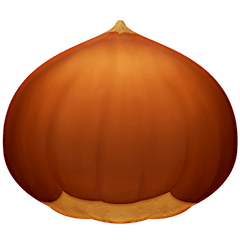
This image has format transparent PNG with resolution 240x240.
You can download this image in best resolution from this page and use it for design and web design.
Chestnut PNG with transparent background you can download for free, just click on download button.
The chestnuts are the deciduous trees and shrubs in the genus Castanea, in the beech family Fagaceae. The name also refers to the edible nuts they produce. They are native to temperate regions of the Northern Hemisphere.
Chestnut trees are of moderate growth rate (for the Chinese chestnut tree) to fast-growing for American and European species. Their mature heights vary from the smallest species of chinkapins, often shrubby, to the giant of past American forests, C. dentata that could reach 30 metres (98 feet). Between these extremes are found the Japanese chestnut (C. crenata) at 10 m average; followed by the Chinese chestnut (C. mollissima) at about 15 m, then the European chestnut (C. sativa) around 30 m.
The Chinese and more so the Japanese chestnuts are both often multileadered and wide-spreading, whereas European and especially American species tend to grow very erect when planted among others, with little tapering of their columnar trunks, which are firmly set and massive. When standing on their own, they spread on the sides and develop broad, rounded, dense crowns at maturity. The foliage of the European and American species has striking yellow autumn coloring.
Its bark is smooth when young, of a vinous maroon or red-brown color for the American chestnut, grey for the European chestnut. With age, American species' bark becomes grey and darker, thick, and deeply furrowed; the furrows run longitudinally, and tend to twist around the trunk as the tree ages, sometimes reminiscent of a large cable with twisted strands.
The leaves are simple, ovate or lanceolate, 10–30 cm long and 4–10 cm wide, with sharply pointed, widely spaced teeth, with shallow rounded sinuates between.
The flowers follow the leaves, appearing in late spring or early summer or into July. They are arranged in long catkins of two kinds, with both kinds being borne on every tree. Some catkins are made of only male flowers, which mature first. Each flower has eight stamens, or 10 to 12 for C. mollissima. The ripe pollen carries a heavy, sweet odor that some people find too sweet or unpleasant. Other catkins have these pollen-bearing flowers, but also carry near the twig from which these spring, small clusters of female or fruit-producing flowers. Two or three flowers together form a four-lobed prickly calybium, which ultimately grows completely together to make the brown hull, or husk, covering the fruits.
Chestnut flowers are not self-compatible, so two trees are required for pollination. All Castanea species readily hybridize with each other.
In this page you can download free PNG images: Chestnut PNG images free download